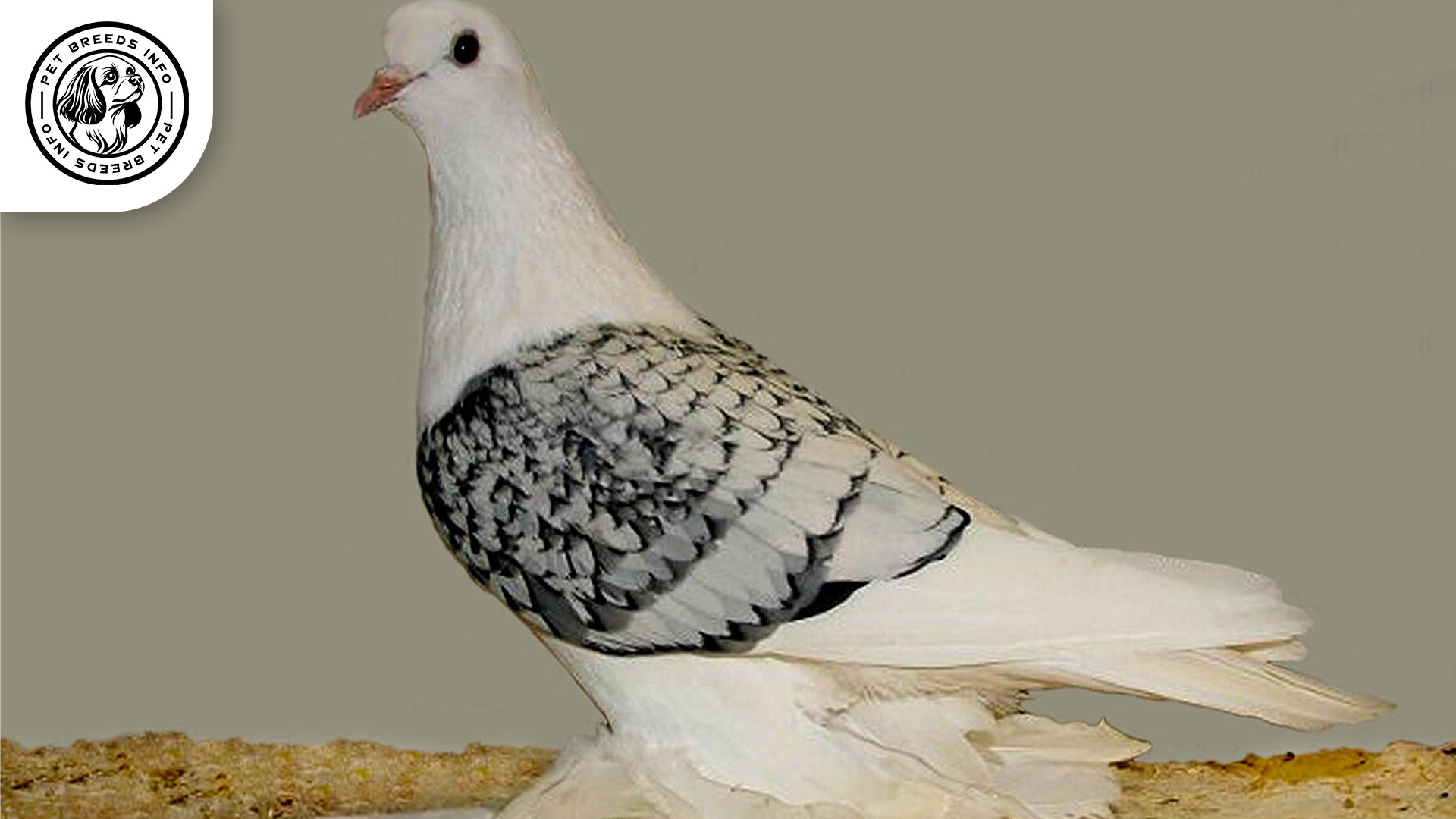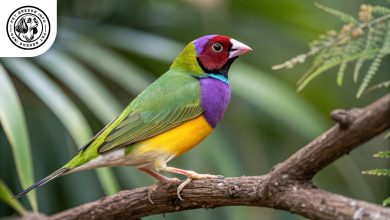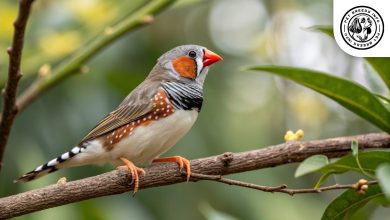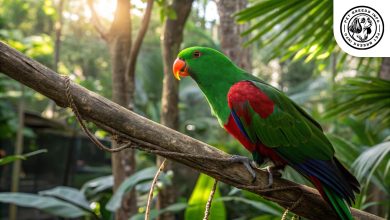Ice Pigeon Bird: Personality, Lifespan, Food & Care
General Introduction of the Breed
The Ice Pigeon, known in German as “Eistaube,” is a domestic pigeon breed that originated in Germany. It is a fancy pigeon that has been selectively bred for its striking appearance, particularly its ice-blue plumage.
The breed dates back several centuries and was developed through careful breeding to enhance its beautiful coloration and distinct pattern. It is primarily kept for exhibition purposes and admired by breeders worldwide.
Table of Contents
| Common Name | Ice Pigeon |
| Scientific Name | (Not mentioned in the text) |
| Origin | Germany |
| Size | Medium-sized (250 to 350 grams) |
| Lifespan | Around 7 to 10 years |
| Talking Ability | (Not mentioned in the text, generally pigeons do not “talk” in the way parrots do) |
| Colors | Icy blue-grey; some variations may have white, black, or darker markings |
| Noise Level | (Not explicitly mentioned, but their calm demeanor suggests a moderate noise level) |
| Social Behavior | Social; can coexist peacefully with other pigeons and bird species |
Physical Characteristics
Ice Pigeons are medium-sized pigeons with a strong, well-proportioned body. They typically weigh between 250 to 350 grams.
Their most distinctive feature is their beautiful, icy blue-grey feathers, which resemble a frosty or snow-like texture. Some variations may have white, black, or darker markings.
The eyes of the Ice Pigeon are usually dark, providing a striking contrast to their stunning plumage.
The breed may have a clean-headed appearance or a crest, depending on the specific variety.
The tail is well-shaped and proportional to the body, adding to the overall elegant look of the bird.
Read More: Cuban Amazon Bird
Personality and Temperament
Ice Pigeons are known for their gentle and calm demeanor, making them excellent birds for enthusiasts and breeders.
They have a moderate energy level and enjoy flying and exploring their surroundings.
These pigeons can form a strong bond with their owners but are generally independent compared to other pet birds.
They are social birds and can coexist peacefully with other pigeons and bird species.
Due to their calm nature, they are not aggressive and can be handled by experienced bird keepers.
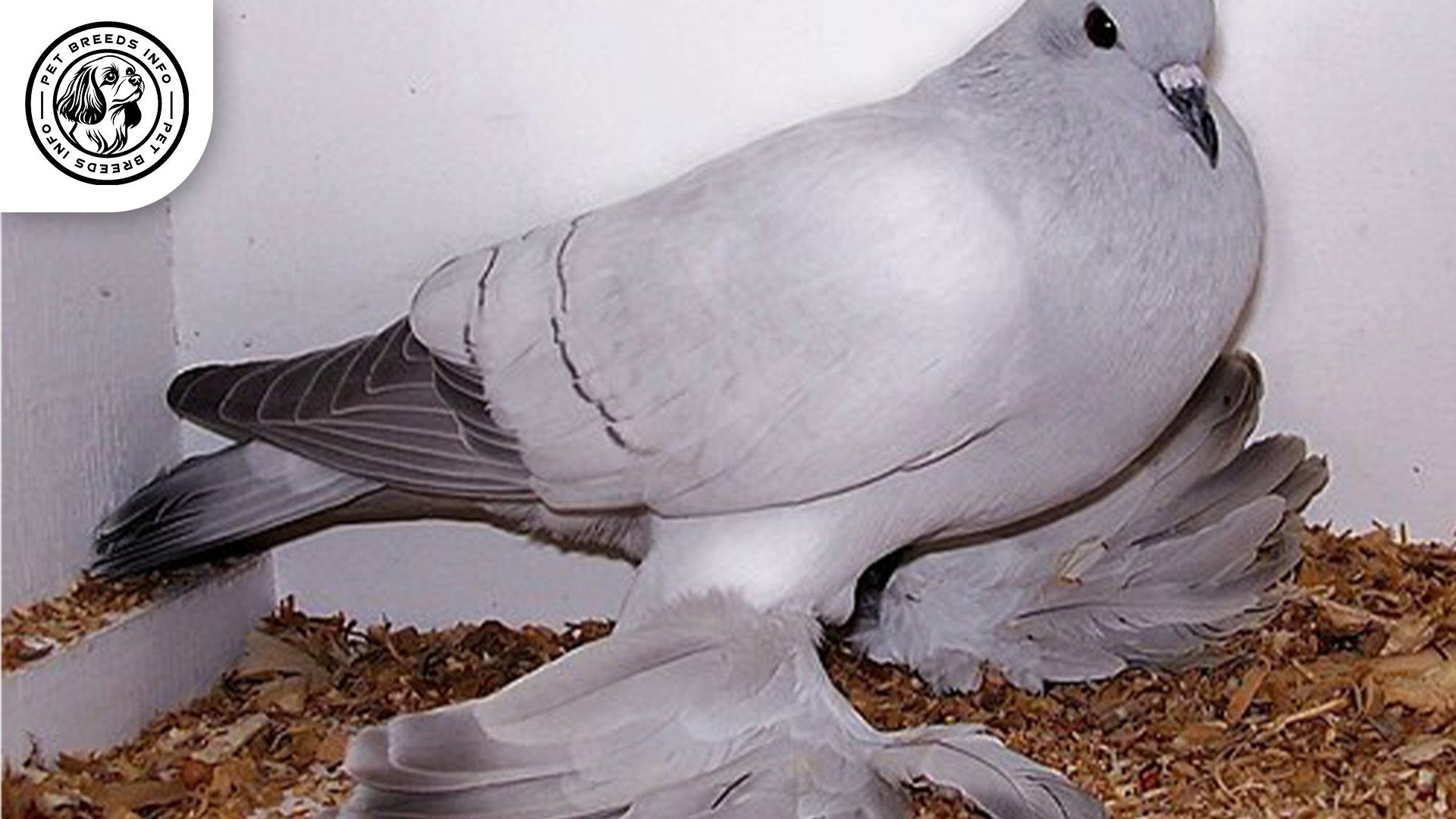
Care and Maintenance Requirements
Ice Pigeons require a spacious loft or aviary where they can fly and exercise freely.
They adapt well to different environments but should be protected from extreme weather conditions.
Grooming is minimal as pigeons naturally preen themselves, but regular checks for feathers and beak health are essential.
Providing clean water and a well-ventilated living area helps maintain their overall health.
Regular hygiene practices such as cleaning their loft, trimming nails, and checking for mites or parasites are necessary.
Diet and Nutrition
Ice Pigeons thrive on a diet of high-quality pigeon feed consisting of grains, seeds, and legumes.
Fresh greens, vegetables, and occasional fruits can be added to their diet for variety and nutrition.
Avoid feeding them salty, sugary, or processed foods, as these can be harmful.
Clean, fresh water should always be available to keep them hydrated.
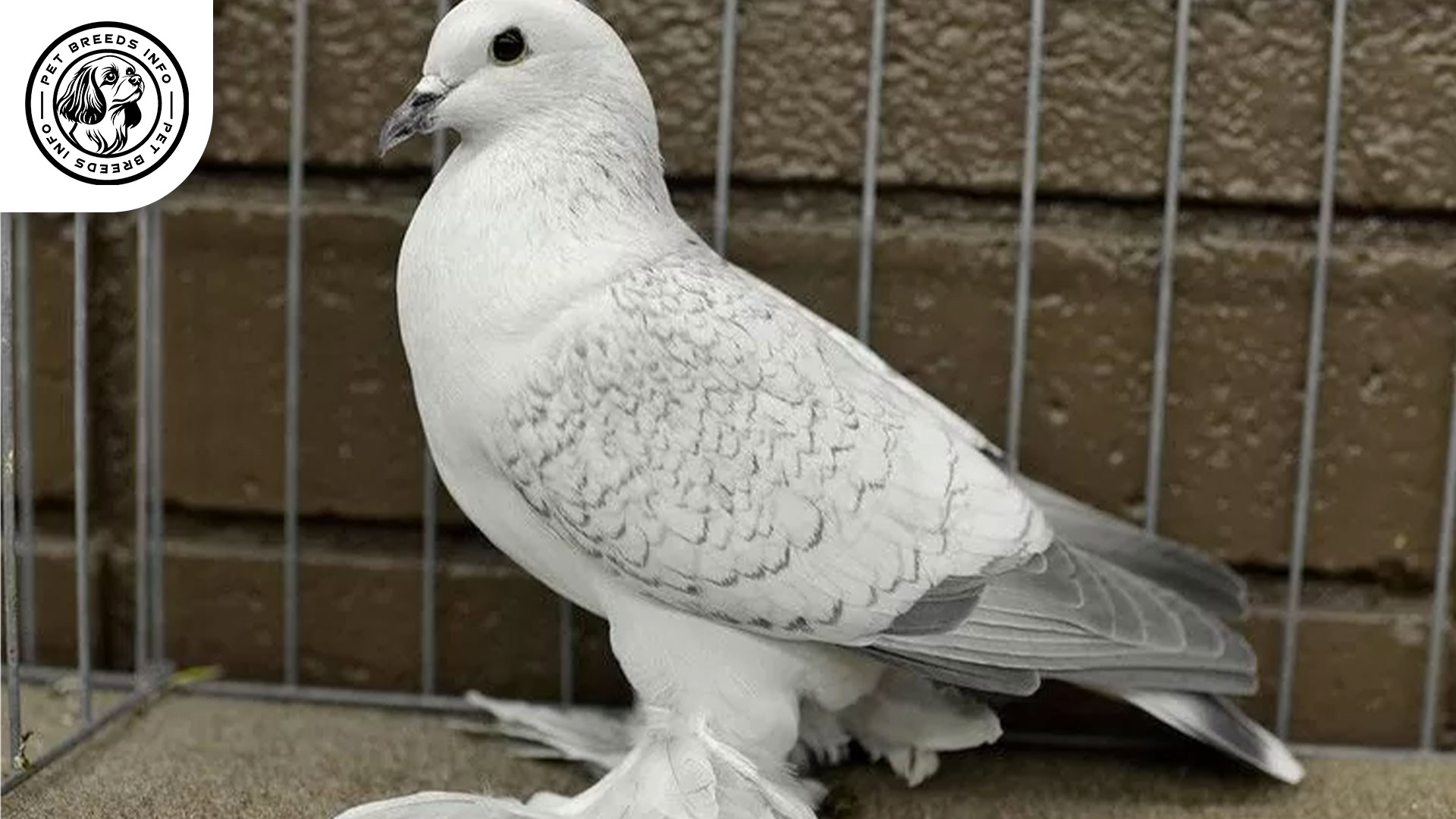
Health and Common Medical Issues
Ice Pigeons are generally hardy but can be prone to common pigeon ailments such as respiratory infections, parasites, or nutritional deficiencies.
Maintaining a clean and sanitary environment can help prevent diseases.
The average lifespan of an Ice Pigeon is around 7 to 10 years with proper care.
Regular vet check-ups and vaccinations, if necessary, should be considered to ensure long-term health.
Training and Behavior Management
Ice Pigeons are relatively easy to train, especially when hand-raised from a young age.
The best training methods include gentle handling and positive reinforcement with food treats.
Socializing them at an early stage can help them get used to their handlers and surroundings.
They can be trained to recognize their home loft and even return to it if allowed to fly outside.
Read More: Indigo Finch
Interaction with Other Animals and Humans
Ice Pigeons can get along well with other pigeons and birds when introduced properly.
They are suitable for bird enthusiasts, families, or individuals looking for a calm and easy-to-care-for pet.
Though not highly affectionate, they can recognize their owner and respond to feeding routines.
They are not aggressive and can coexist with children, but they require gentle handling.
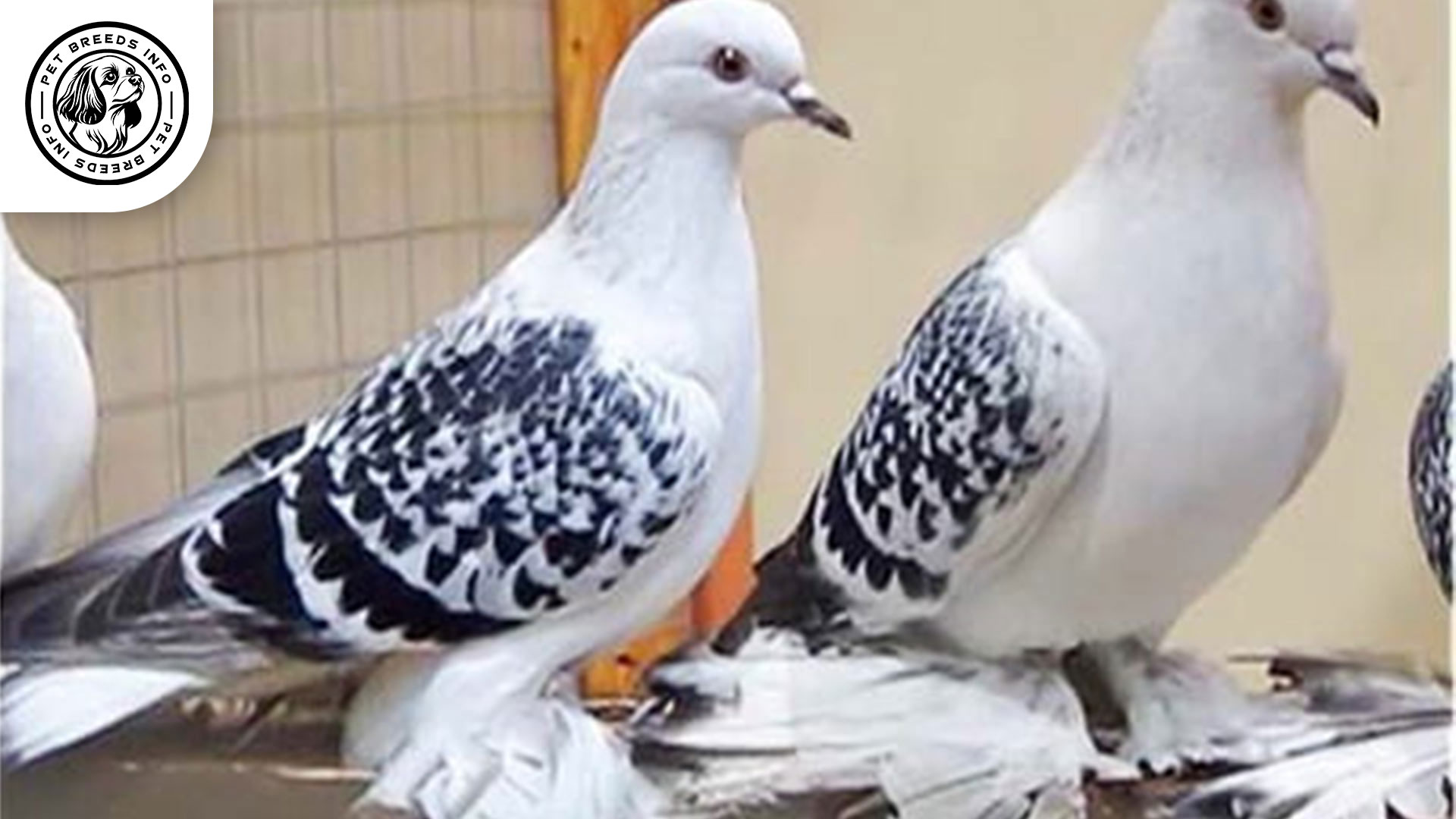
Price and Availability
The cost of an Ice Pigeon varies depending on its quality, lineage, and breeder reputation, typically ranging from $50 to $200 per bird.
They are primarily available through specialized pigeon breeders or fanciers, as well as at pigeon shows and exhibitions.
Potential buyers should ensure they purchase from a reputable source where the birds are well cared for.
Conclusion and Final Thoughts
The Ice Pigeon is an excellent choice for pigeon enthusiasts looking for a visually stunning and easy-to-care-for breed.
Its calm demeanor, beautiful feather coloration, and social nature make it an attractive option for both new and experienced bird keepers.
Owners should be prepared to provide a clean and spacious living environment, proper diet, and routine care to keep these birds healthy.
Before acquiring an Ice Pigeon, potential owners should ensure they can meet its housing and dietary needs to maintain its well-being.
Read More: Houdan Chicken
FAQ
What is the most distinctive feature of the Ice Pigeon?
Their beautiful, icy blue-grey feathers.
Are Ice Pigeons difficult to care for?
No, they are generally easy to care for, requiring a spacious loft, proper diet, and regular hygiene.
What is the typical lifespan of an Ice Pigeon?
Around 7 to 10 years with proper care.
Do Ice Pigeons make good pets?
Yes, their calm demeanor and easy-going nature make them suitable for enthusiasts and families.
Where can I buy an Ice Pigeon?
They are primarily available through specialized pigeon breeders or fanciers, and at pigeon shows.
